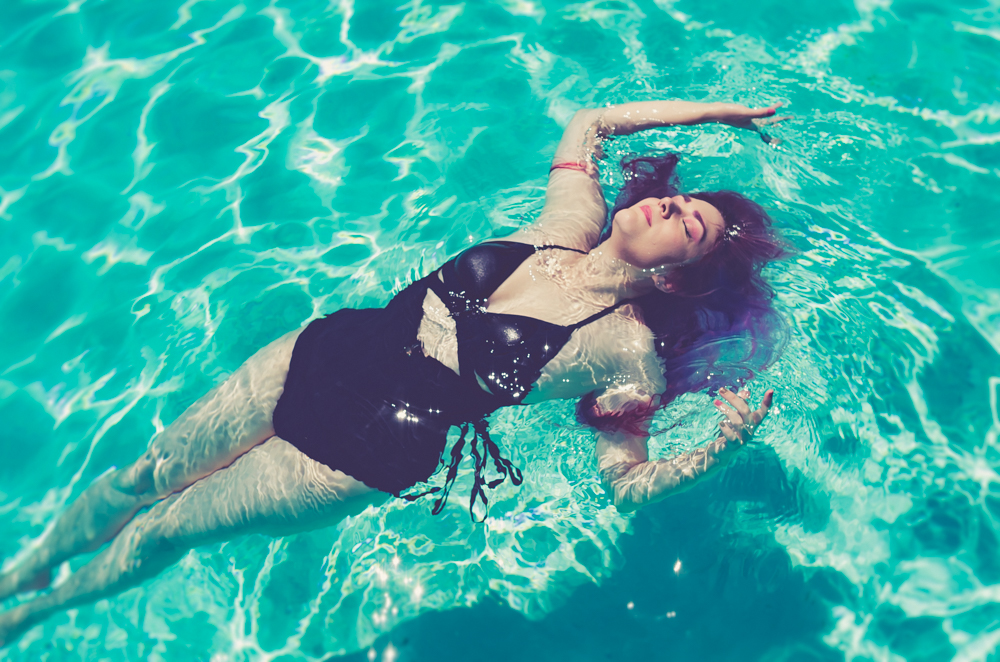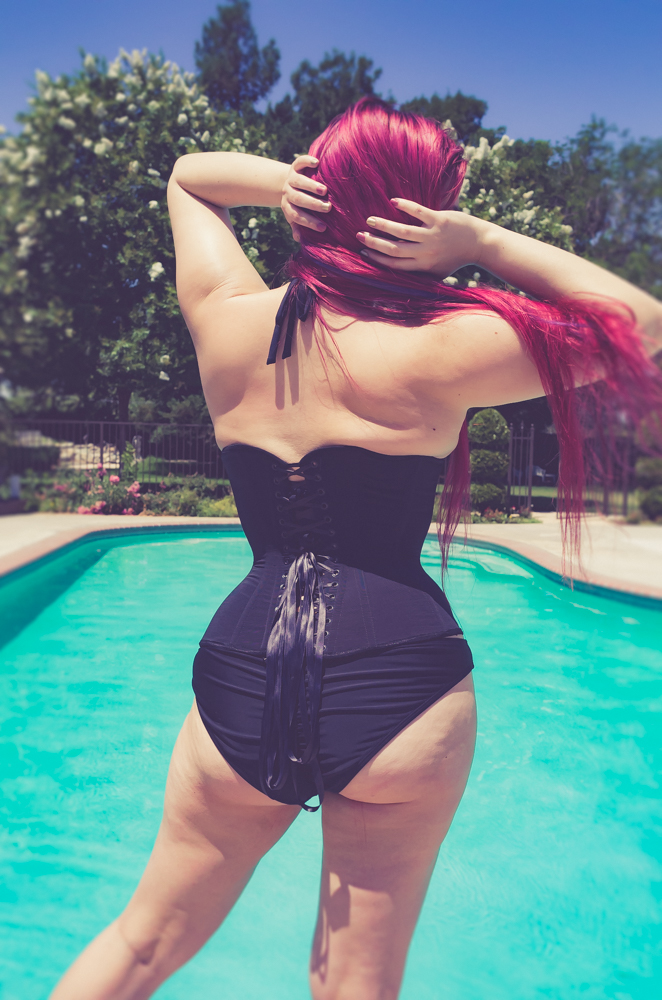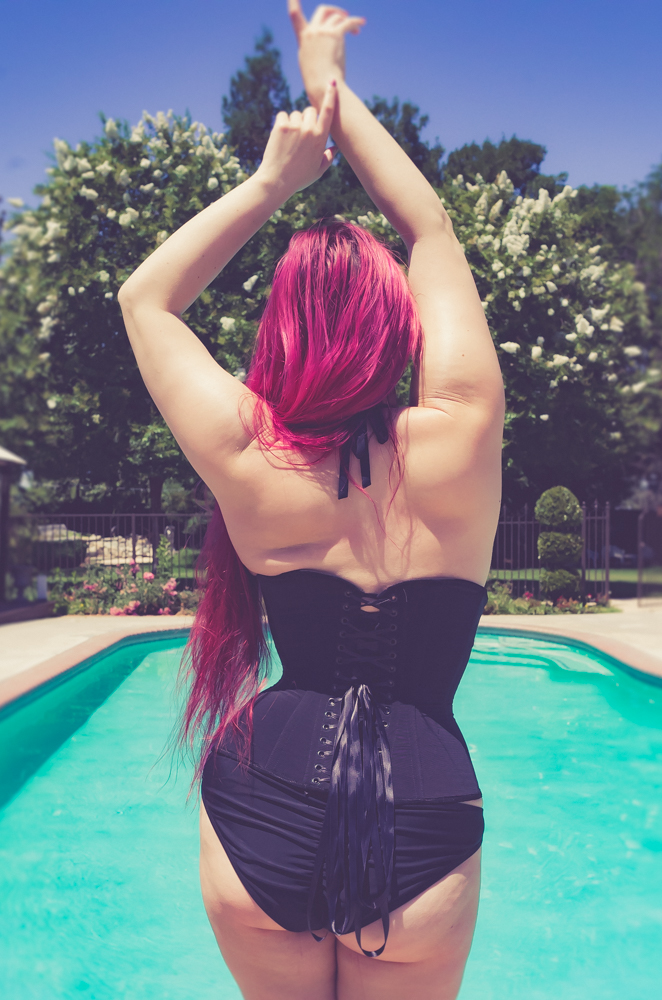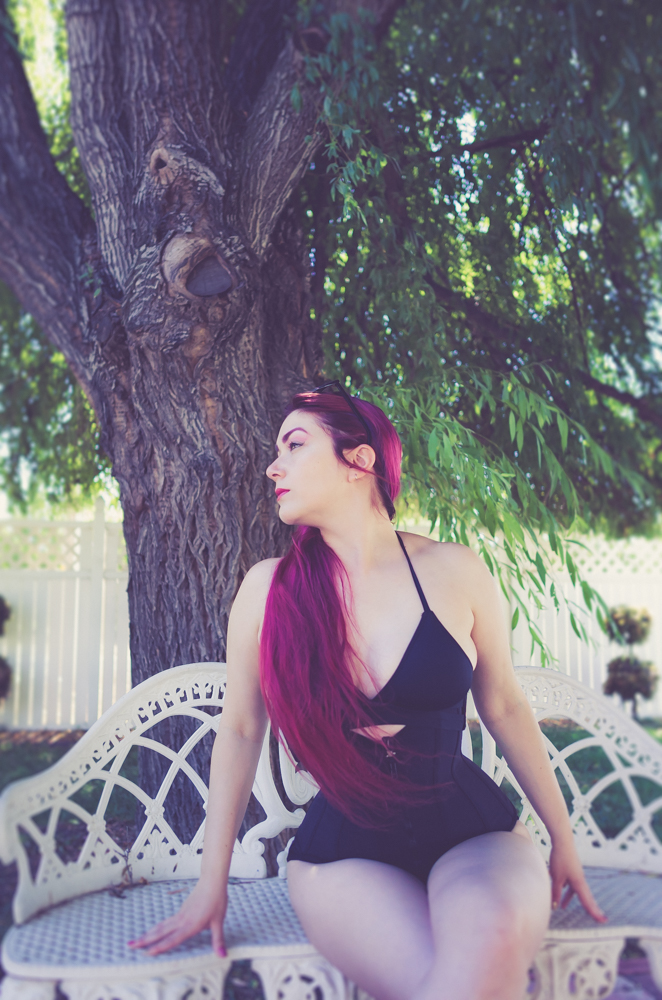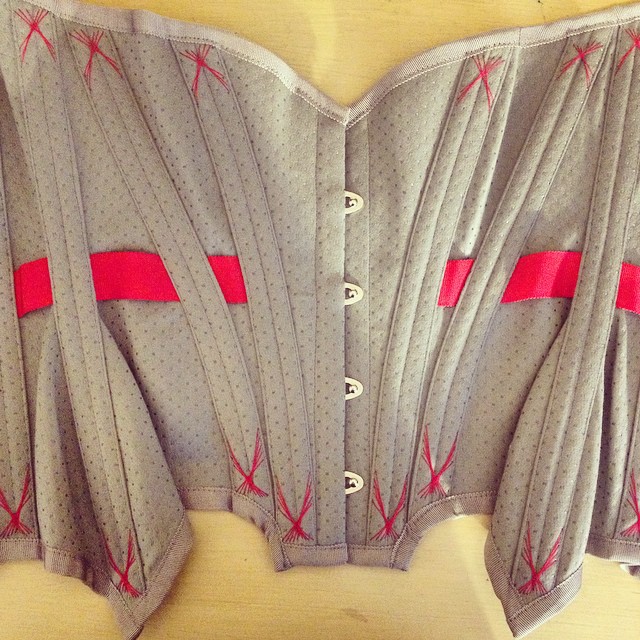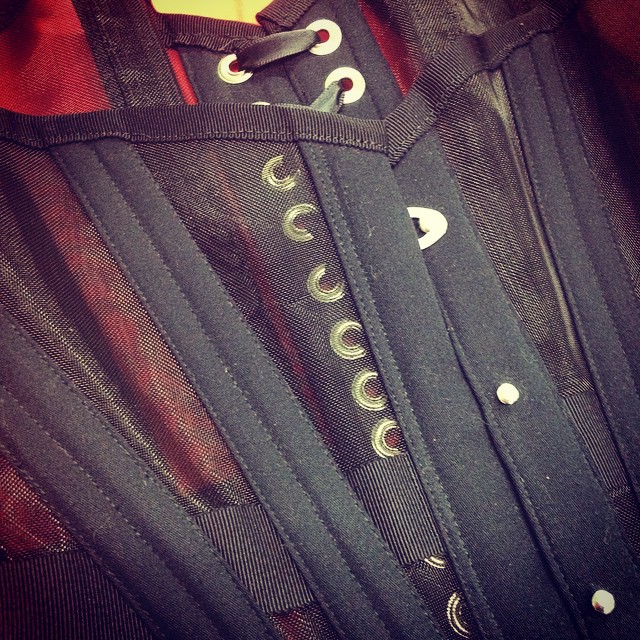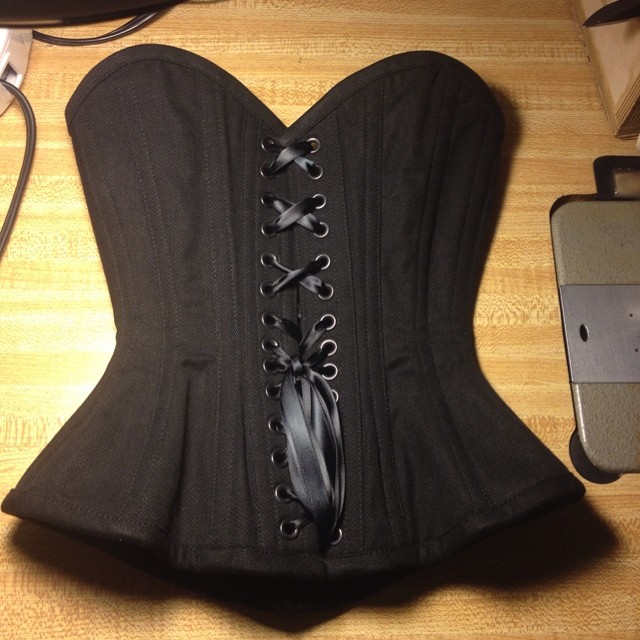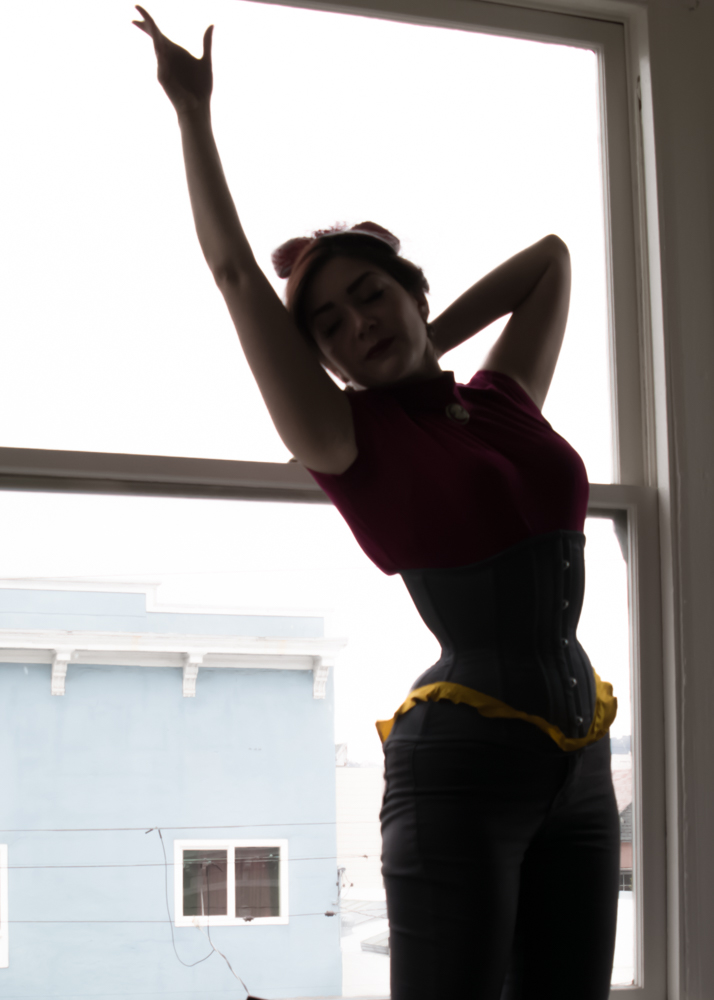Wow! Thank you all for your amazing interest in the swimming corset. I had no idea the level of enthusiasm you would have for this idea.
As my original post made the rounds on Facebook, I noticed a few questions cropping up repeatedly:
- But... why?
Well... why not, mostly! The fancy struck me and I wanted to see what happened. As for why you, or anyone else, should want it now that it's happened – all the same reasons you'd wear a corset in the first place! (Except maybe historical reenactment.) Are you waist training and looking to maintain your reduction while also hitting the beach? Do you perhaps respond to the deep pressure therapy of wearing a corset? Are your joints hypermobile? Any of those reasons and more are grounds for considering a swimming corset. - Can you really swim in it? That seems highly improbable and/or like a terrible idea!
I am definitely not suggesting using this corset for swimming Olympic laps! This is fashion swimwear, much like many other beautiful bathing suit designs – what's up, string bikini? It absolutely can be safely submerged and worn while splashing about, but it is not intended for serious sportsmanship. Additionally, for those who aren't already familiar with my work, I tend to fit my corsets for minimal rib compression and high mobility to begin with.
Personally, I didn't notice any reduction in my lung capacity. Part of what makes the swimming corset viable is that I varied the construction and materials to suit the activity, not just to make it waterproof. It's two layers of powermesh with no waist tape, so there is more room for rib and waist expansion as needed. Even the binding is elastic. The waist reduction is very modest. - So you mean it's a fashion corset, not a real corset?
No, it's a real corset – there is a real waist reduction and appropriate hardware. Synthetic whalebone is different from regular plastic boning – it doesn't crumple over time, just molds beautifully as your body heat contours it to form. I didn't use a busk in it – but then again, my Minx ribbon corset doesn't call for one either! - Even if you technically can swim in it, isn't it uncomfortable?
Honestly, I was way more concerned about the chlorine leeching the color from my freshly-dyed hair. (Shout-out to Katey at Glama-Rama!)
I did not feel any discomfort or shortness of breath while wearing, lounging, shooting, and swimming in this piece. I used one of my bespoke patterns, and one of my major goals with corsetmaking is always maximum mobility and comfort, even in the standard fit. The use of powermesh took that to the next level. - What about cleaning and care?
I rinsed it out thoroughly after swimming in it, then again when I got home, and hung it to dry. If you have a bigger sink, and more clean towels than I did that day, you could also handwash with a lingerie detergent like Soak, then roll it in the towel for a spell to aid the drying process, and finish with an air dry (outside, if possible). Once dry, I store it with my other corsets, rolled up. The corset is made from powermesh, which is often used in swimwear, although I did use small pieces of herringbone coutil as a casing for the underbusk and the center back bones and grommets.
- Is this an all-in-one corset suit?
No, I paired my bespoke swimming corset with Target's finest swimwear. Actually, finding a black bikini that fit me reasonably well was much more stressful than making the swimming corset! Technically, I could integrate more coverage into the piece, but for mobility I think it's best to have them as separates. - What was that about additional prototyping?
I have a few more ideas I'd love to test out. In exchange for your feedback on these variations, I can offer something of a discount for a select few orders. - How do I place an order?
Currently the swimming corset is waitlisted, mostly because I don't have synthetic whalebone in large quantities yet. If you don't mind waiting until the end of swim season (in this hemisphere, anyway), I might be able to make a couple more this year – please contact hello@popantique.com to get the ball rolling! You can even place a deposit to secure your place in the queue.
Please note that I am taking orders for other types of corsets in the meantime! You can read more about that here – I'm running a sale on single layer Gibson Girls in select fabrics, through August 23rd, 2017. - So when will it really be available?
I'd like to complete the prototype run by March of next year, which would allow me to begin taking orders in the spring so you can spend next summer splashing about! Thank you for your patience. In the meantime, I encourage you to sign up for my newsletter, to stay abreast of these developments.

